Red Cross Wants Your Help With Their Cell & Gene Therapy Solutions
Ummm....what? "We partner with you to support the development and delivery of your novel drug therapies." Oh. Cool.
Hey, have you heard of the Red Cross? It’s that pretty big non profit that takes blood donations and stuff.
This post is concerned with the “and stuff” part of the previous statement.
I know, I know, COME ON SARAH…the RED CROSS?!?!?! Lay off those humanitarians that save the world.
Sorry. Not today.
What got me thinking about the Red Cross?
Well, this mailer…that has come to my mailbox twice in the last two weeks:
I don’t know, am I? What makes a unique donor?
Oh wait…what’s that? Cell and Gene Therapy Solutions? Gosh, I didn’t know that the Red Cross did that stuff….
I thought we donated blood to save people in the hospital and during disasters and stuff.
Maybe I’m naïve. Maybe everyone already knows that the Red Cross is hopping right on the Cell and Gene Therapy gravy train Solutions.
This cash cow product is customized! 🙌🏼 Phew.
I was curious. What happens to someone’s blood after they donate? How do you know where your blood ends up?
Luckily there’s a little story with some nifty pictures.
And according to Step Five on Your Donated Blood's Journey, my blood is distributed to hospitals 24 hrs/day, 7 days/week.
And here’s the final step. Just transfused right into saving a life.
Funnily enough, I didn’t see any steps that mentioned cell and gene therapy.
So I asked the Chat Bot.
She’s still learning. But the ARC says that your donations are used by the Red Cross and “therapy partners”.
Who are the therapy partners? They don’t tell you that part.
Let’s open up my Unique Donor Opportunity.
Oh snap, they’re paying?!?!?
$350?!?!? Hellzzzzz yeah! Make it rain!
Check it out…they remove your blood, take some stuff out (for their unnamed “therapy partners”), and then PUT IT BACK IN. AWESOME.
Hot damn!!
SIGN. ME. UP.
What determines whether you get $200 vs $350?
Gosh, sorry…turns out you are mid…just kinda sorta unique…$200 for you.
Y’all know I can’t just let this slide. The American Red Cross is trying to get me to whore out my blood to unnamed cell and gene therapy “partners” to make “products” for $350 every other month.
→ Incoming → Small Rant ⇩
I’m just going to point out that this comes on the heels of the world’s very large, if not THE largest, redistribution of wealth.
Which extremely exacerbated financial disparities. That is also an understatement.
This likely makes a $350 payment more attractive to those most acutely experiencing the negative financial effect of “the new normal”. You know, those underprivileged, underserved folks that non profits and NGOs are always “trying” to “help”.
Like how Planned Parenthood helps all those people not have babies. I wrote about that eugenics racket non-profit here:
So what happens if you donate your blood or white blood cells, you know the infection fighting ones, every 56 days for a year? Two years? Nothing? Shut up, Sarah. Stop it with that crazy conjecture. Of course, a humanitarian organization would NEVER hurt the people they are trying so desperately to cull help (see post linked above).
Anyway…sounds like there’s certainly nothing to see here.
Let’s have a lil look see into the ole American Red Cross (ARC), shall we?
First and foremost, the American Red Cross is a 501(c)(3), non-profit organization. Here’s a refresher on what that means (from irs.gov site):
Exemption Requirements - 501(c)(3) Organizations
To be tax-exempt under section 501(c)(3) of the Internal Revenue Code, an organization must be organized and operated exclusively for exempt purposes set forth in section 501(c)(3), and none of its earnings may inure to any private shareholder or individual. In addition, it may not be an action organization, i.e., it may not attempt to influence legislation as a substantial part of its activities and it may not participate in any campaign activity for or against political candidates.
Gosh, I wonder if the ARC has any governmental relationship goals?
Oh look, turns out they do.
Our Goal:
To create, through effective legislative and regulatory initiatives, a public policy environment at all levels of government that will forward the mission and strategic objectives of the American Red Cross.
Sounds perfectly in line with non-profit exemption requirements. They are quasi though, so I guess it’s cool.
Let’s go on.
The below priorities help increase visibility of the American Red Cross among government officials and strategic partners, advocate for public policy priorities, identify and pursue future funding and cost saving opportunities and strengthen relationships with the US Congress, Federal agencies, state and local officials, and other nonprofit organizations.
Red Cross goals continue…
Increased Awareness of Role in Disaster Planning and Response
Educate government officials and strategic partners on Disaster Services
Enhance support and funding opportunities for disaster response, infrastructure, readiness and response
Collaborate with government and strategic partners to increase the nation’s capacity to respond to human-caused and natural disasters
Engage government officials and strategic partners to assist in efforts to better serve diverse communities
Expanded Understanding of Preparedness, Health and Safety Initiatives
Educate government officials and strategic partners on Preparedness, Health and Safety
Build support for the Red Cross Health and Safety training as a recognized state and federal standard
Increased Engagement in Biomedical Services
Engage elected officials in a campaign to raise awareness of the need for blood and increase donor participation to maintain a stable, sustainable blood supply
Develop strategic relationships with diverse partners to focus on the need of increased donations from minority communities
Settle down RumpelstiltsCross, next thing I know you’ll be asking for my first born.
Introduce legislation at state level to lower blood donor age to 16 with parental consent
The American Red Cross plays a pivotal role in supplying leading biotechnology companies with a secure, scalable supply of product, supporting Phase 1 - Phase 3 research efforts. We partner with you to support the development and delivery of your novel drug therapies and have completed contract manufacturing for three clients — one received commercial approval and launch.
Our team of experts can provide you with high-quality material, hands-on support, national collections, and testing services—ensuring consistency with your manufacturing processes and providing manufacturing capacity that can scale according to your needs. The American Red Cross has expertise with receiving technology transfer materials and training from contract manufacturing clients, allowing us to manufacture according to your exact specifications.
With all of their good intentions and humanitarian-ness, I sure hope the ARC is getting plenty of support.
By the way, the ARC experienced a revenue increase, to the tune of almost $37 million, between 2019 and 2022.
And, apparently transparency has been an issue of concern.
Oh look, what’s this?
American Red Cross spars with US Justice Dept over scope of antitrust law
The organization argued it is a congressionally designated instrument of the federal government, not a "person" subject to Sherman Act liability.
Federal judges have "repeatedly" held that the Red Cross is a "corporate 'person' separate from the United States itself," the Justice Department said. The U.S. said it does not "own, control or supervise" the Red Cross.
→ The short story…
I’ll sum it up for you. The American Red Cross is the largest supplier of blood platelets in the United States. Platelets must be treated prior to use to prohibit bacterial growth.
Historically, the ARC supplied treated or untreated platelets, allowing for market pressure and competition in this industry.
ARC abruptly announced that they would be exclusively using Cerus Corporation’s INTERCEPT Blood System, which cannot be used in conjunction with any other blood treatment, per FDA. Hospitals were previously able to choose the platelet treatment system they wanted to use. With the ARC-Cerus exclusive partnership, this choice is eliminated and hospitals receiving blood from ARC will receive blood treated with INTERCEPT.
The merging of ARC and Cerus, and ensuing reduction/elimination of competition, is what precipitated this anti-trust lawsuit. However, and unfortunately not surprisingly, the judge ruled that the Red Cross has antitrust immunity. This happened, in my opinion, with some very flexible interpretation of the law. Which reminds me a lot of this and this.
The longer story….
Court Finds Red Cross Has Antitrust Immunity, Rejecting Broad Interpretation of the Sherman Act
Monday, February 5, 2024
WHAT HAPPENED
Recently, in a rarely considered question, the US District Court of Massachusetts held that the American Red Cross (ARC), a federally chartered corporation, is not subject to liability under the Sherman Antitrust Act (Sherman Act) because it is not an antitrust “person.” The court narrowly construed the Sherman Act to exclude a quasi-public entity like ARC, resulting in a broad interpretation of immunity for quasi-public entities under the antitrust laws.
Some information on US antitrust law:
→ The Sherman Antitrust Act ←
This law prohibits conspiracies that unreasonably restrain trade. Under the Sherman Act, agreements among competitors to fix prices or wages, rig bids, or allocate customers, workers, or markets, are criminal violations. Other agreements such as exclusive contracts that reduce competition may also violate the Sherman Antitrust Act and are subject to civil enforcement.
The Sherman Act also makes it illegal to monopolize, conspire to monopolize, or attempt to monopolize a market for products or services. An unlawful monopoly exists when one firm has market power for a product or service, and it has obtained or maintained that market power, not through competition on the merits, but because the firm has suppressed competition by engaging in anticompetitive conduct. Monopolization offenses may be prosecuted criminally or civilly.
Read more about PRICE FIXING, BID RIGGING, AND MARKET ALLOCATION SCHEMES: WHAT THEY ARE AND WHAT TO LOOK FOR.
Of relevance:
→ The Clayton Act ←
This law aims to promote fair competition and prevent unfair business practices that could harm consumers. It prohibits certain actions that might restrict competition, like tying agreements, predatory pricing, and mergers that could lessen competition.
An illegal merger occurs when two companies join together in a way that may substantially lessen competition or tend to create a monopoly in a relevant market. This reduction in competition can harm consumers by potentially leading to higher prices or fewer choices for products or services. It can also harm workers by potentially leading to lower wages or fewer choices for employment.
Law is not an area in which I consider myself well informed, however the following aspect of the Clayton Act is what seems applicable to the issue of ARC’s exclusive agreement with Cerus Corporation’s INTERCEPT blood treatment system:
An illegal tying agreement happens when a company forces customers to buy one product (the tying product) in order to purchase another product (the tied product). The two products are bundled or “tied” together, which gives the tying agreement its name. This practice restricts a customer’s choice and can limit competition. In a fair marketplace, business compete on price and on how good their products are. If an illegal tying arrangement is in place, a seller can use its strong market power on a popular product to force customers to buy a second, lesser product.
Back to the antitrust suit….
ARC is the largest supplier of blood platelets in the United States and, until recently, sold “untreated” platelets to hospitals which then employed various services to mitigate the risk of platelets becoming infected. Verax Biomedical Inc. (Verax) manufactures one such mitigation service. After ARC announced its plan to begin using Cerus Corporation’s INTERCEPT Blood System on its platelet supply prior to sale – a system that is incompatible with Verax’s service – Verax sued ARC for allegedly leveraging its power in the market for platelets to monopolize the market for mitigation services.
The court found that, although Congress had clearly waived ARC’s sovereign immunity, it did not constitute a “person” under the Sherman Act in form or function because its public attributes outweighed its private ones.
BACKGROUND
ARC is a federally chartered nonprofit corporation responsible for “provid[ing] volunteer aid in time of war to the sick and wounded of the Armed Forces.” 36 U.S.C. § 300102(1). It is also the largest supplier of blood platelets in the United States.
Verax produces and sells US Food and Drug Administration (FDA)-cleared tests for detecting bacterial growth in platelets.
In the past, ARC sold both “untreated” and “treated” platelets to hospitals. Untreated platelets require further treatment to ensure bacterial growth is controlled. Hospitals could choose which mitigation services to use, including Verax’s.
In 2020, ARC announced its intention to stop selling untreated platelets and to begin treating all platelets with Cerus Corporation’s INTERCEPT Blood System prior to sale. Verax’s service cannot be used on platelets that have been treated with the INTERCEPT system, as the FDA has not endorsed the pairing of the two technologies.
Verax filed suit against ARC, bringing three counts under the Sherman Act: tying, exclusive dealing and attempted monopolization.
ARC moved to dismiss the lawsuit, arguing, in part, that ARC cannot be sued under the Sherman Act. Shortly after, the federal government filed a statement of interest arguing that ARC can be sued under the Sherman Act.
The court concluded that, although it was a close question, ARC was not a “person” under the Sherman Act in either form or function and therefore dismissed the antitrust claims.
Naturally, I wondered about the Cerus Corporation.
Discovering that Cerus follows a familiar industry pattern didn’t take long.
Familiar Industry Pattern, for reference:
I’m sure that Benjamin’s previous position at the American Red Cross had nothing to do with the Cerus partnership with the American Red Cross.
And Dr. Corash’s previous FDA Advisory Panel for Hematology Devices position had nothing to do with the FDA approval of the INTERCEPT Blood System.
And CHRO Alicia Goodman’s current Board position with the American Red Cross is certainly not a conflict of interest with the American Red Cross exclusively using the Cerus INTERCEPT system.
PFFFFFFTTTT…..definitely not.
Hey, Fun Fact:
Just in case you were wondering if that good ole Rockefeller philanthropy missed out on “helping” the Red Cross…




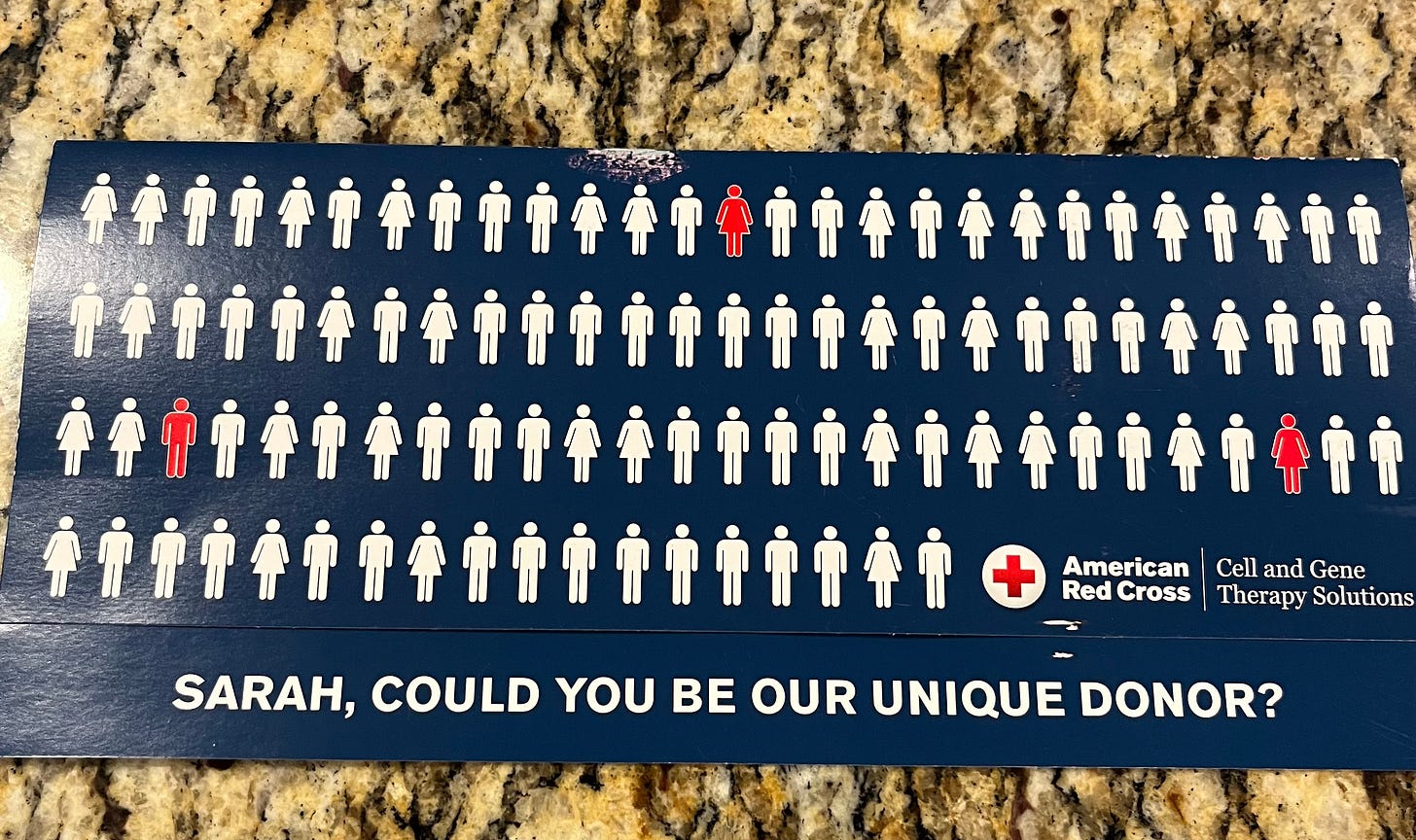
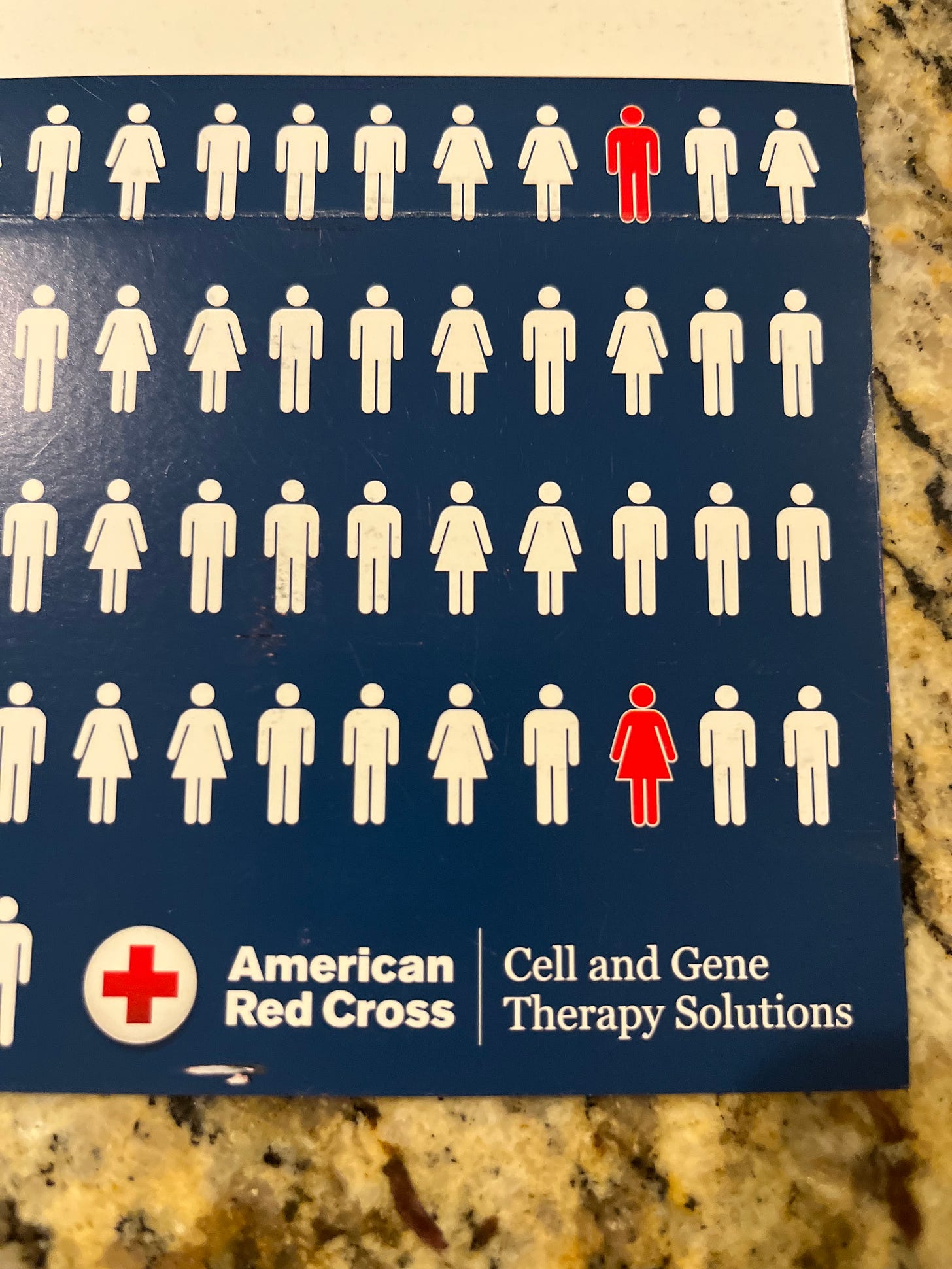

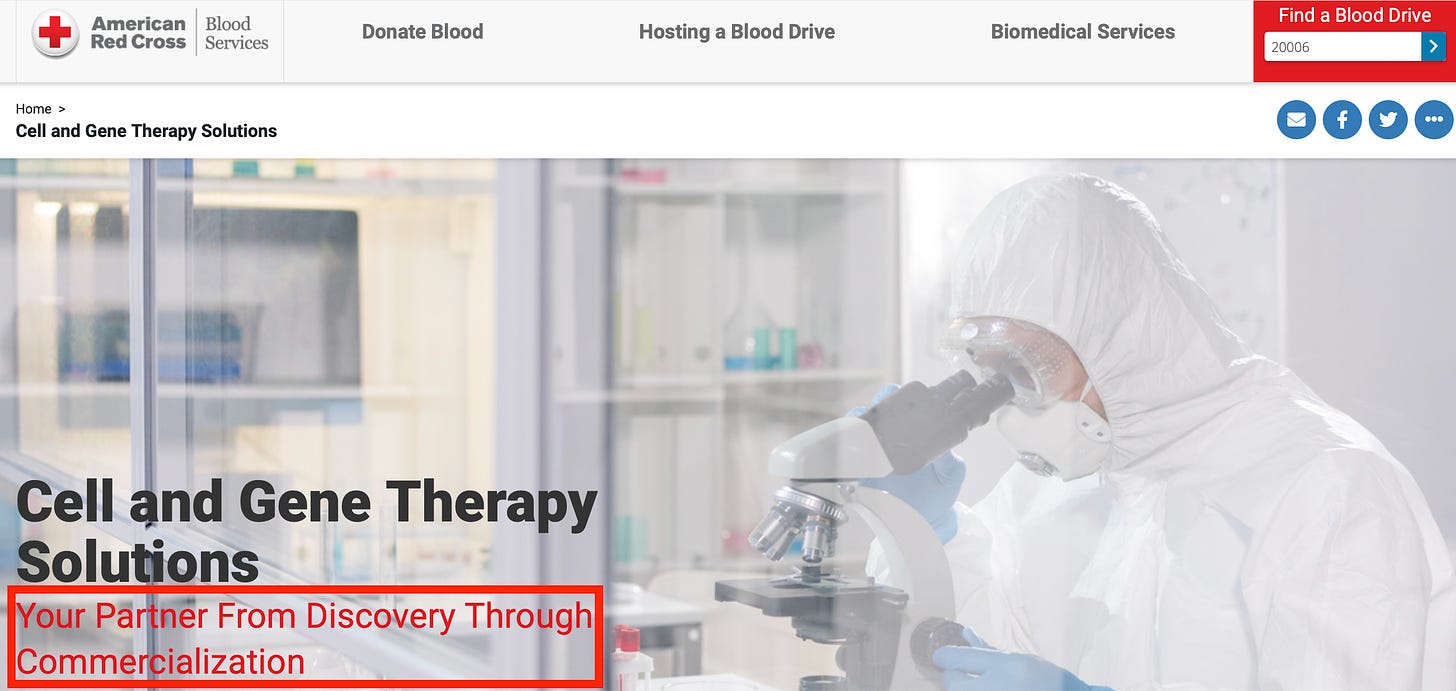
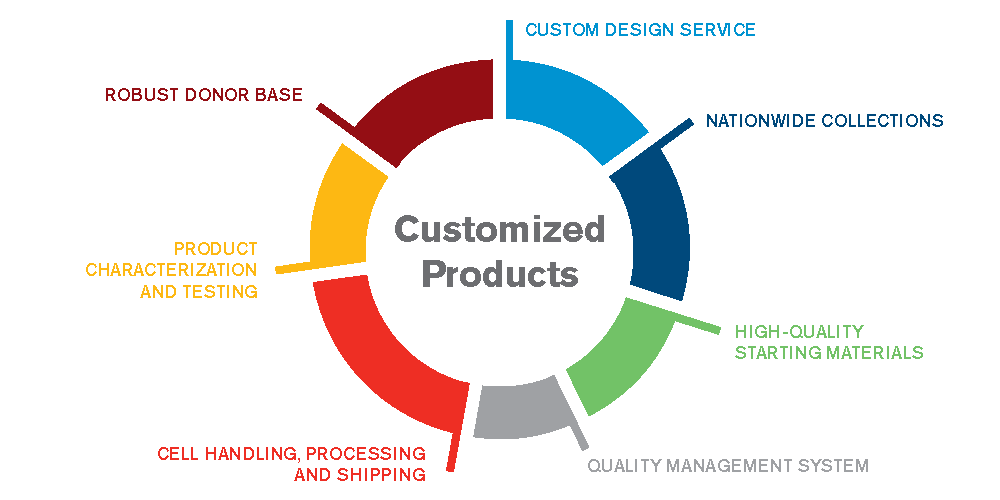

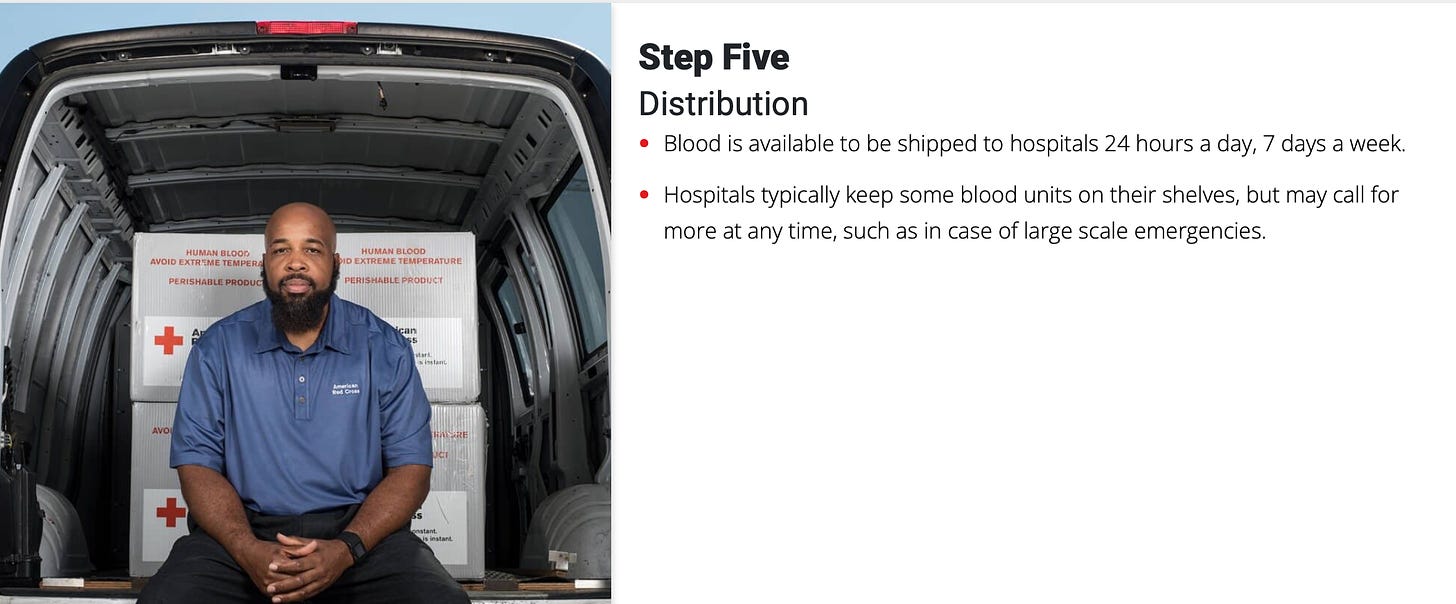
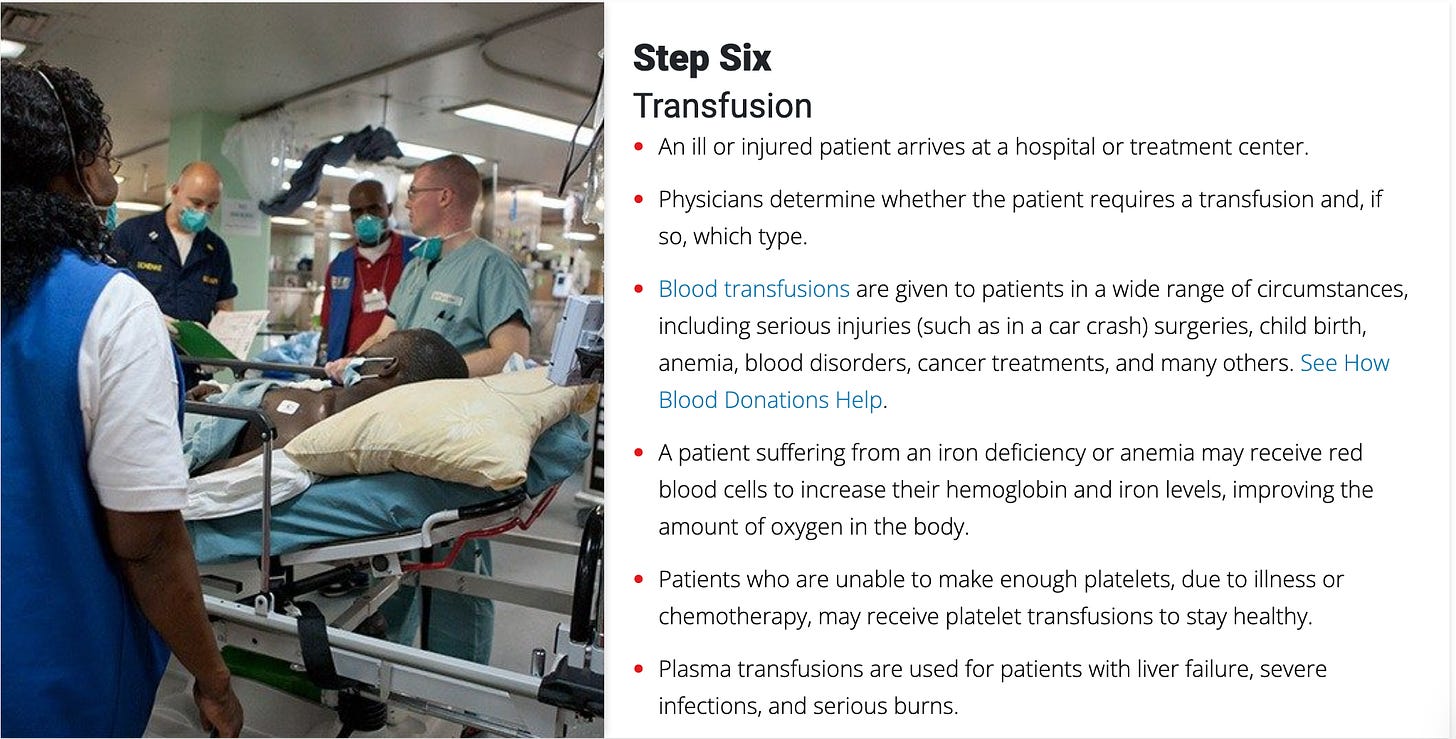
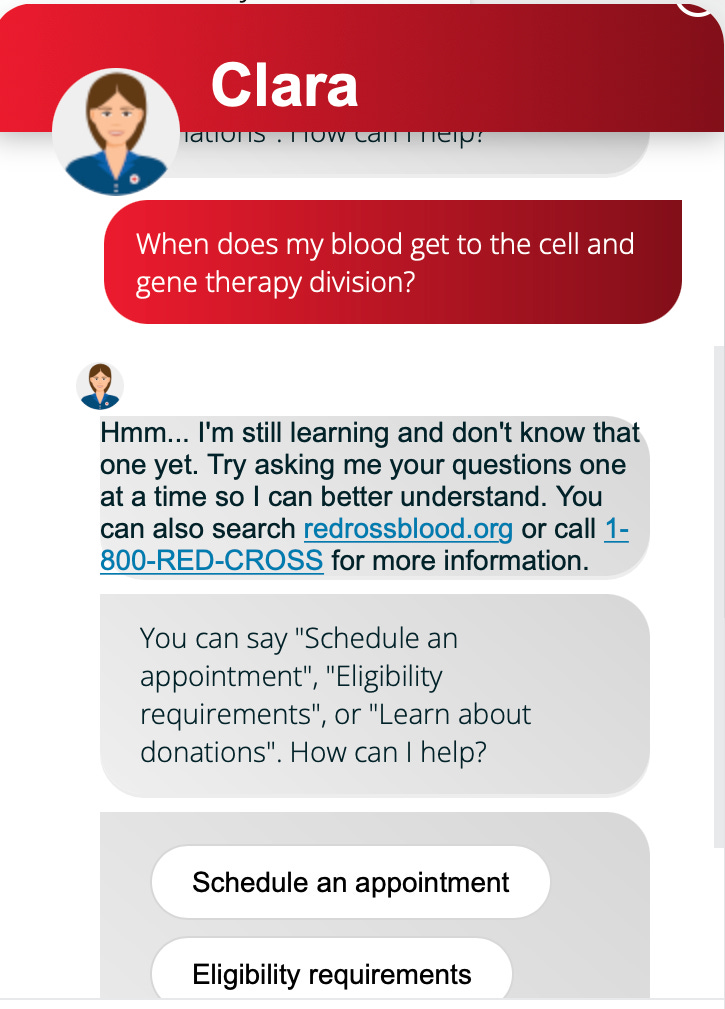

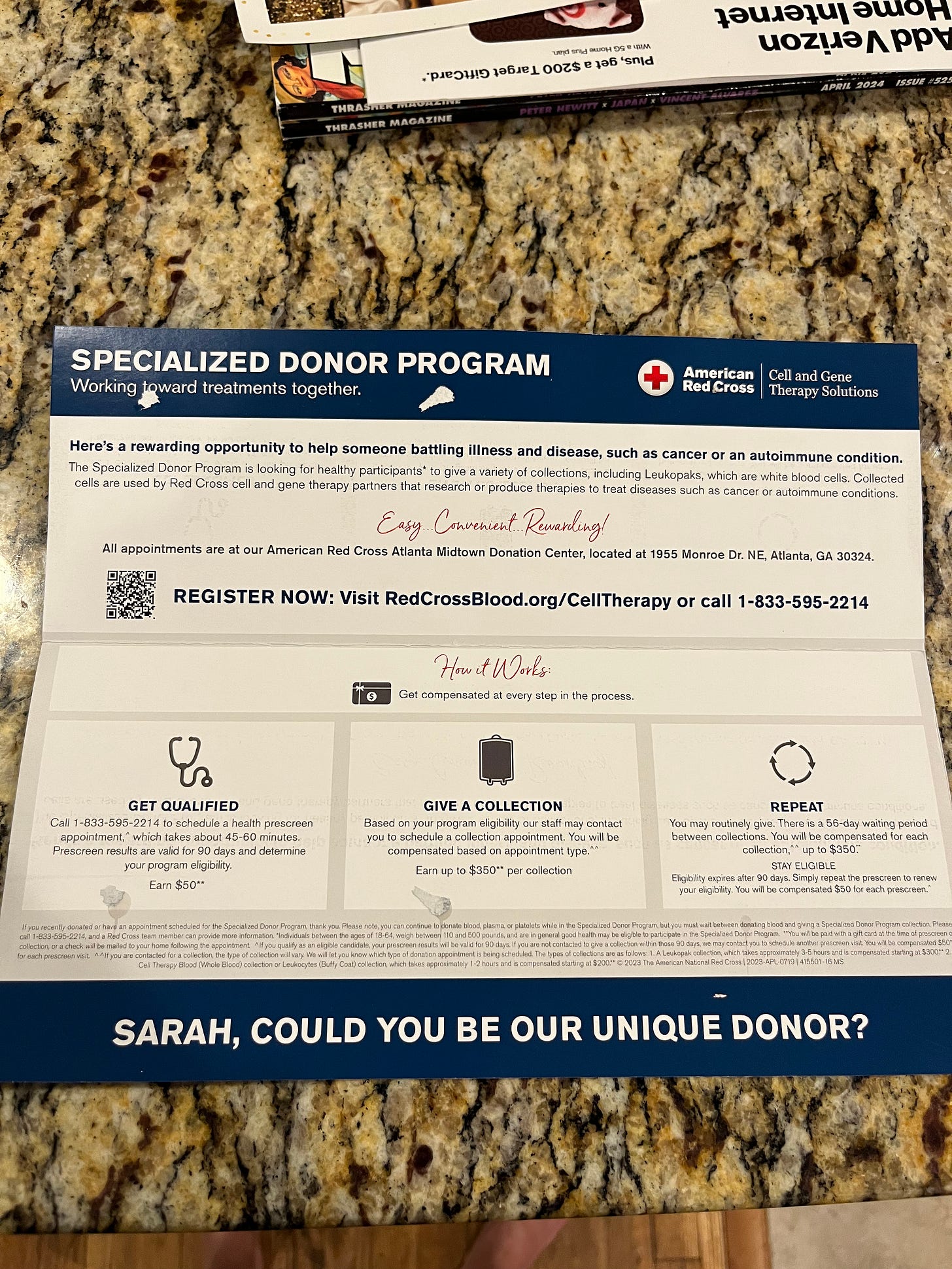
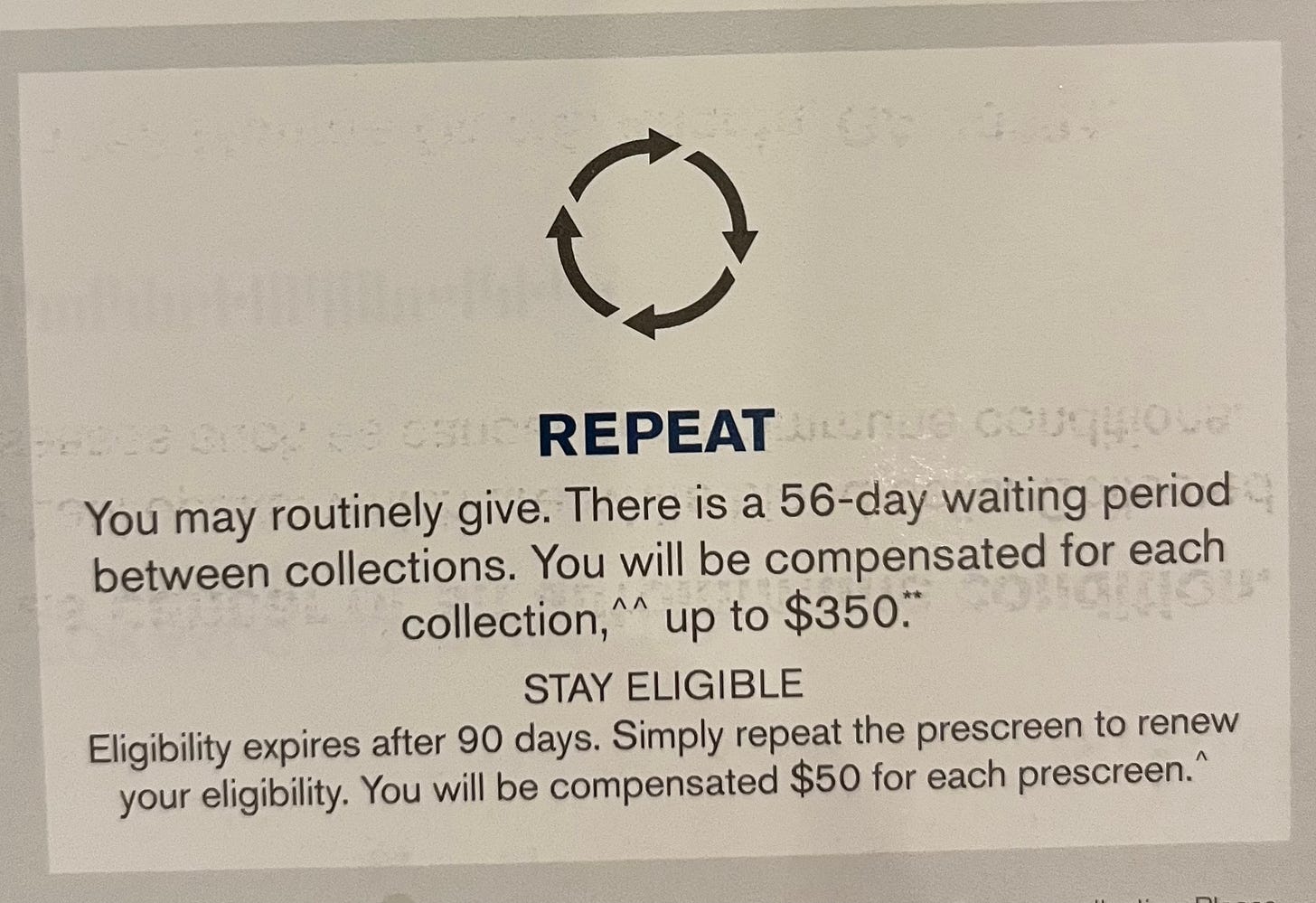



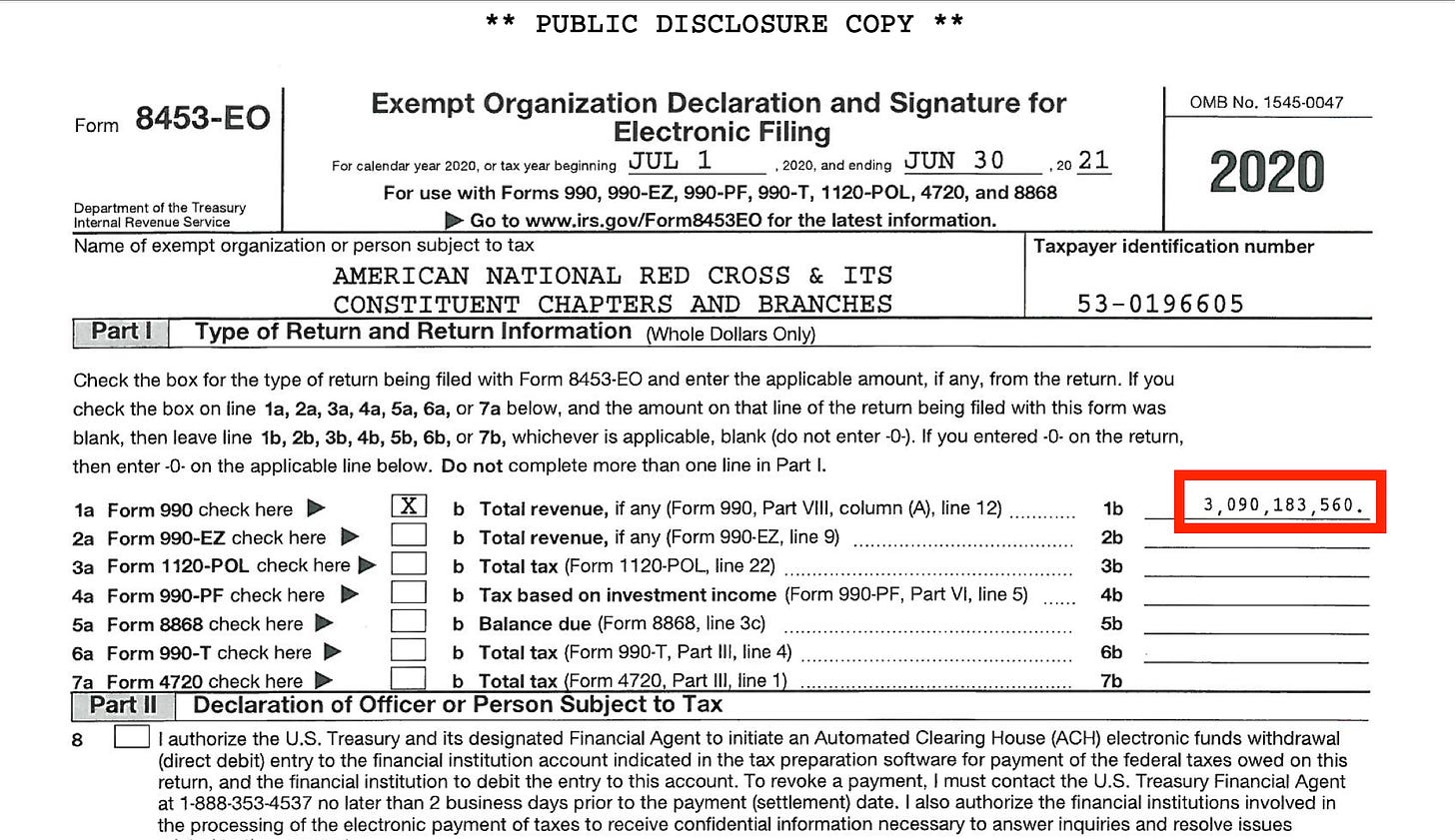

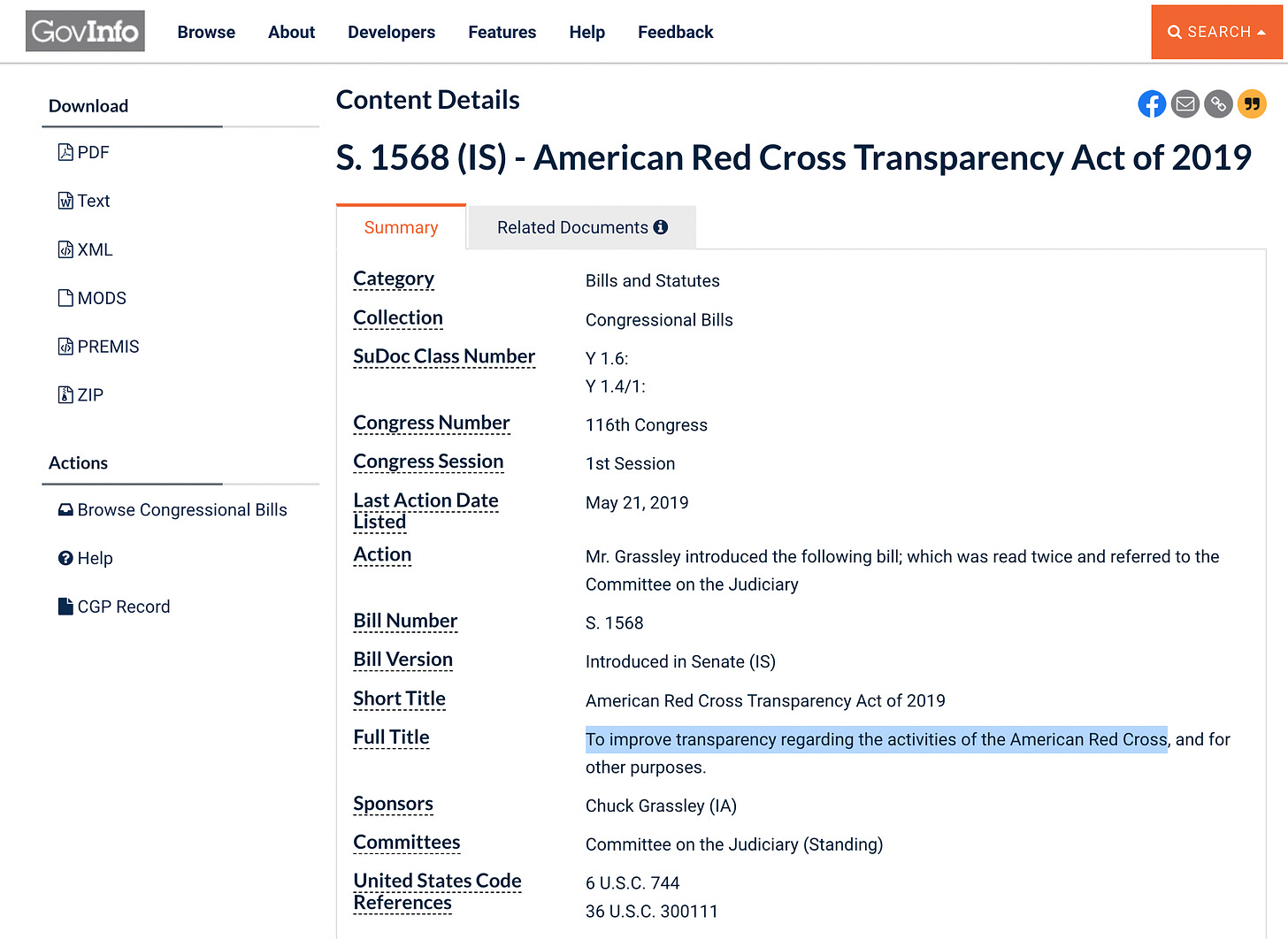


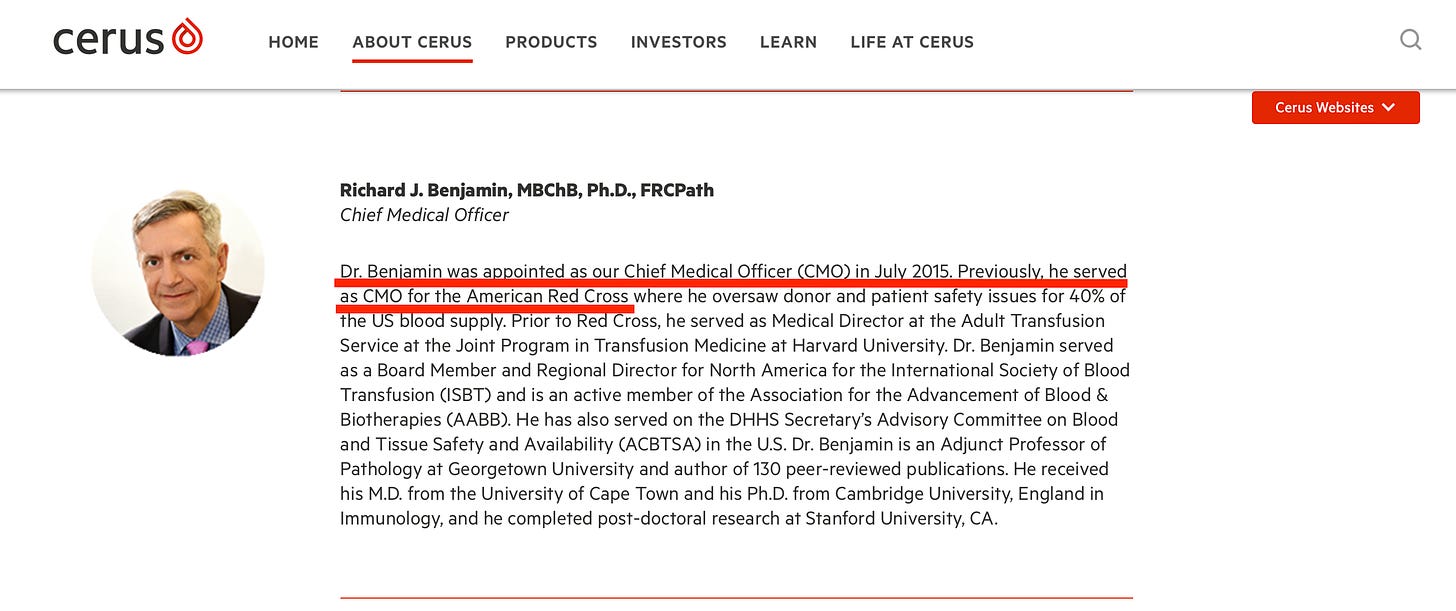

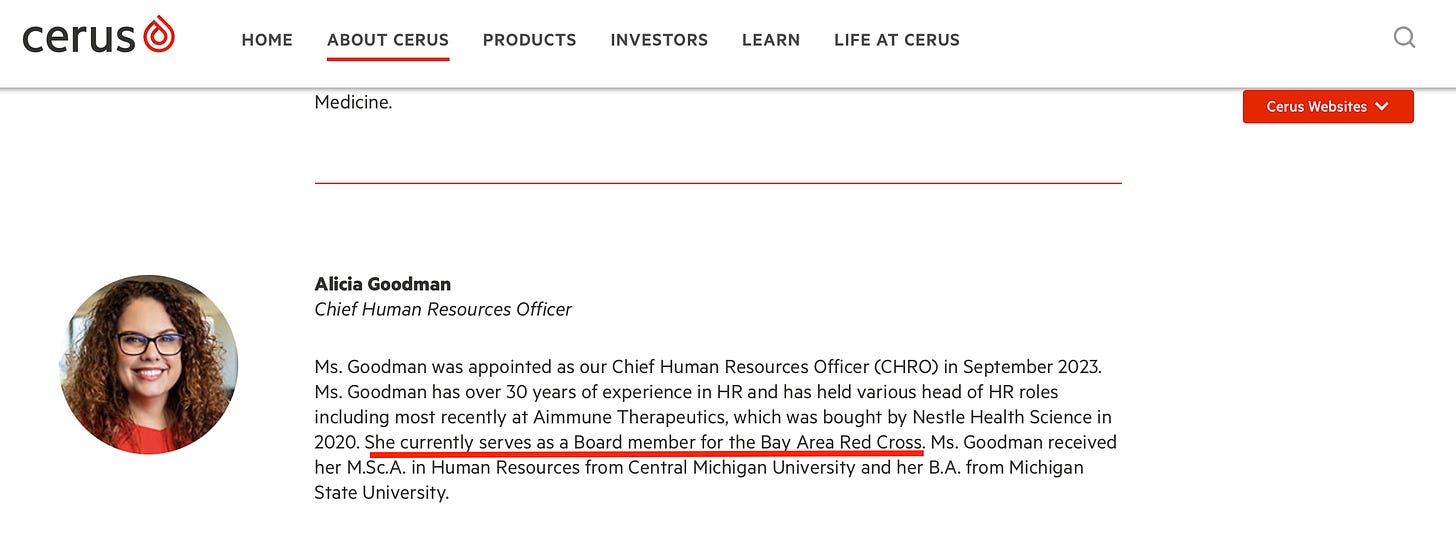

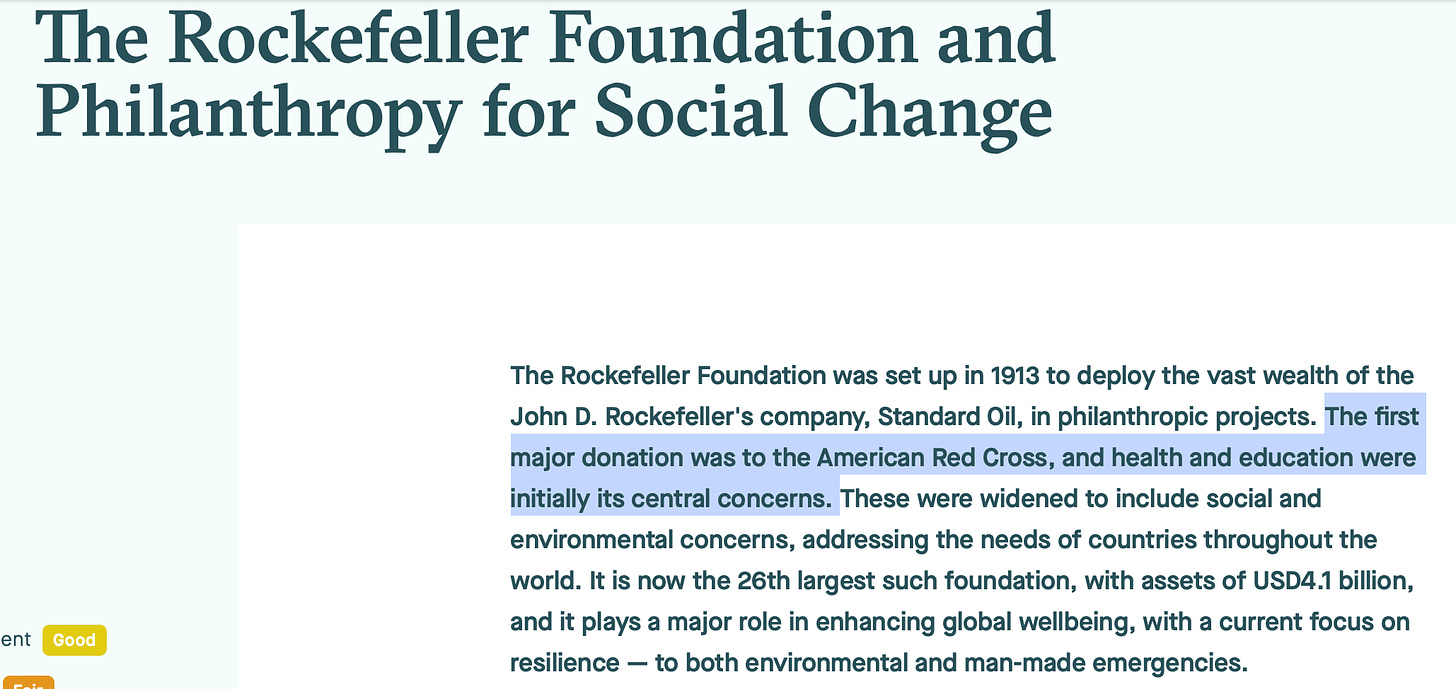
Good work, Sarah. American Red Cross has contaminated the entire US blood supply by virtue of non-screening for spike protein and allowing the donation of mRNA vaxxed individuals. They have become an organization of cull.
Prior to 1995 I used to donate blood 3-4 times a year. Occasionally the Red Cross would call me and ask me to donate. Then I got a cancer diagnosis, which took 3 years and a couple surgeries and some nasty radiation to resolve.
At some point after all that I tried to donate blood again. But they wouldn’t let me do it anymore because of the cancer/radiation and they took me off their list.
In a perverse kind of way, I’m happy they aren’t sending me ‘your unique’ crap. From what I have learned in the past decade, from a corruption perspective, they are about on par with the NGOs facilitating the illegal alien invasion.